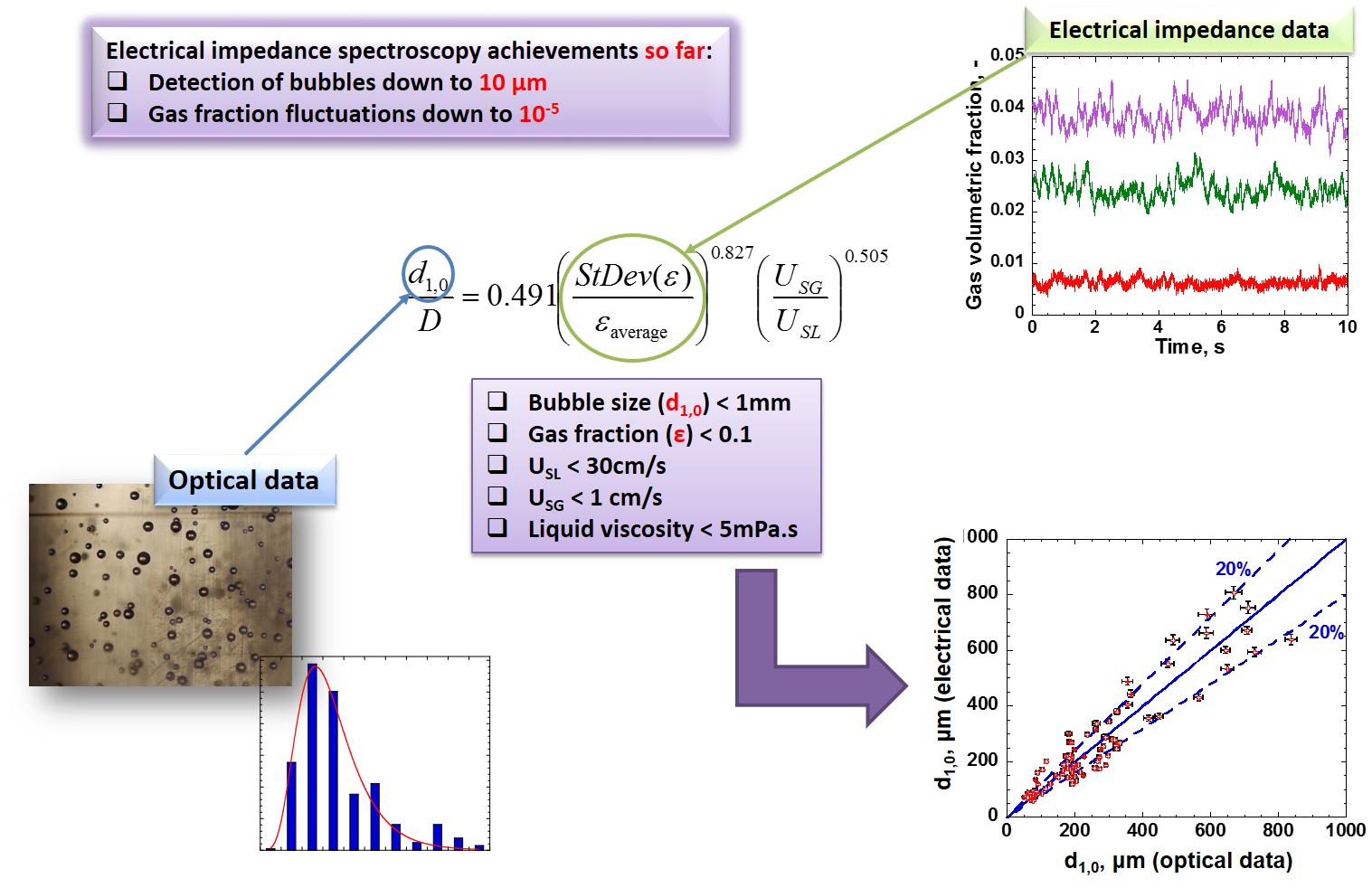Contact Person: Sotiris Evgenidis sevgenid@chem.auth.gr
This project deals with the experimental and theoretical study of bubbly flow, which is encountered in a variety of industrial processes, e.g. chemical and petroleum processing, oil and gas extraction and transportation, nuclear power generation, etc. It is also encountered in the human bloodstream during Decompression Sickness incidents, e.g. in astronauts, scuba divers and metro workers. Measurements are conducted in a vertical co-current upward bubbly flow in a fully controllable flow loop made of Plexiglas® tubing, capable of generating steady and pulsatile flow conditions of various liquid/gas flow rates, gas fractions and bubble sizes. Both Newtonian and non-Newtonian test liquids, as well as blood mimicking fluids, are examined. The loop is equipped with test sections accommodating electrical, optical, acoustical and pressure diagnostics. There are two different electrical diagnostics: A patented, ultra-sensitive electrical impedance spectroscopy technique (European Patent Office, 3005942 Α1/2016) and a 4-plane Electrical Resistance Tomography system (P2000, ITS). Optical measurements are conducted with high speed recording cameras and high definition still digital cameras as well, while an Acoustic Bubble Spectrometer (Dynaflow Inc.) provides the acoustic measurements. Pressure diagnostics include both absolute and differential pressure transducers. The aforementioned diagnostics are employed for the determination of volumetric gas fraction and bubble size distribution as well. Experimental data are compared to results obtained from CFD simulation and other relevant theoretical models describing two-phase flows (e.g. drift-flux model).



